A small multigene hydroxyproline-O-galactosyltransferase family functions in arabinogalactan-protein glycosylation, growth and development in Arabidopsis
- PMID: 26690932
- PMCID: PMC4687291
- DOI: 10.1186/s12870-015-0670-7
A small multigene hydroxyproline-O-galactosyltransferase family functions in arabinogalactan-protein glycosylation, growth and development in Arabidopsis
Abstract
Background: Arabinogalactan-proteins (AGPs) are ubiquitous components of cell walls throughout the plant kingdom and are extensively post translationally modified by conversion of proline to hydroxyproline (Hyp) and by addition of arabinogalactan polysaccharides (AG) to Hyp residues. AGPs are implicated to function in various aspects of plant growth and development, but the functional contributions of AGP glycans remain to be elucidated. Hyp glycosylation is initiated by the action of a set of Hyp-O-galactosyltransferase (Hyp-O-GALT) enzymes that remain to be fully characterized.
Results: Three members of the GT31 family (GALT3-At3g06440, GALT4-At1g27120, and GALT6-At5g62620) were identified as Hyp-O-GALT genes by heterologous expression in tobacco leaf epidermal cells and examined along with two previously characterized Hyp-O-GALT genes, GALT2 and GALT5. Transcript profiling by real-time PCR of these five Hyp-O-GALTs revealed overlapping but distinct expression patterns. Transiently expressed GALT3, GALT4 and GALT6 fluorescent protein fusions were localized within Golgi vesicles. Biochemical analysis of knock-out mutants for the five Hyp-O-GALT genes revealed significant reductions in both AGP-specific Hyp-O-GALT activity and β-Gal-Yariv precipitable AGPs. Further phenotypic analysis of these mutants demonstrated reduced root hair growth, reduced seed coat mucilage, reduced seed set, and accelerated leaf senescence. The mutants also displayed several conditional phenotypes, including impaired root growth, and defective anisotropic growth of root tips under salt stress, as well as less sensitivity to the growth inhibitory effects of β-Gal-Yariv reagent in roots and pollen tubes.
Conclusions: This study provides evidence that all five Hyp-O-GALT genes encode enzymes that catalyze the initial steps of AGP galactosylation and that AGP glycans play essential roles in both vegetative and reproductive plant growth.
Figures
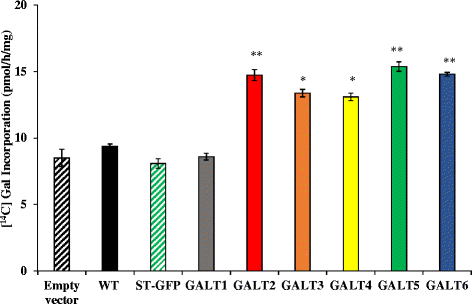
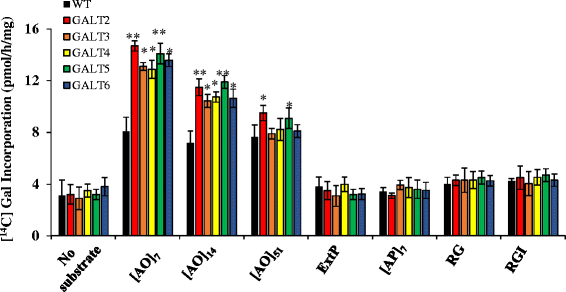
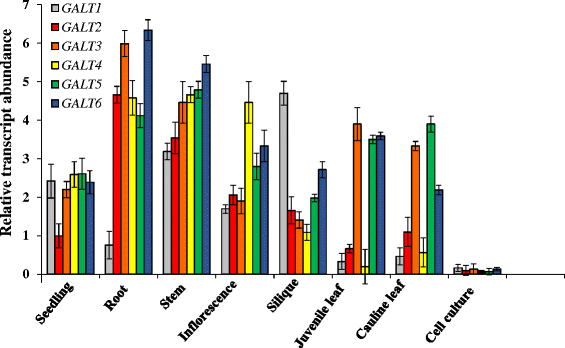
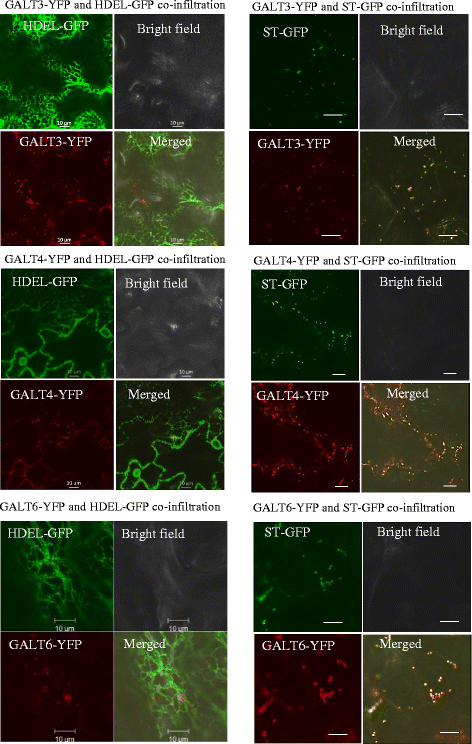
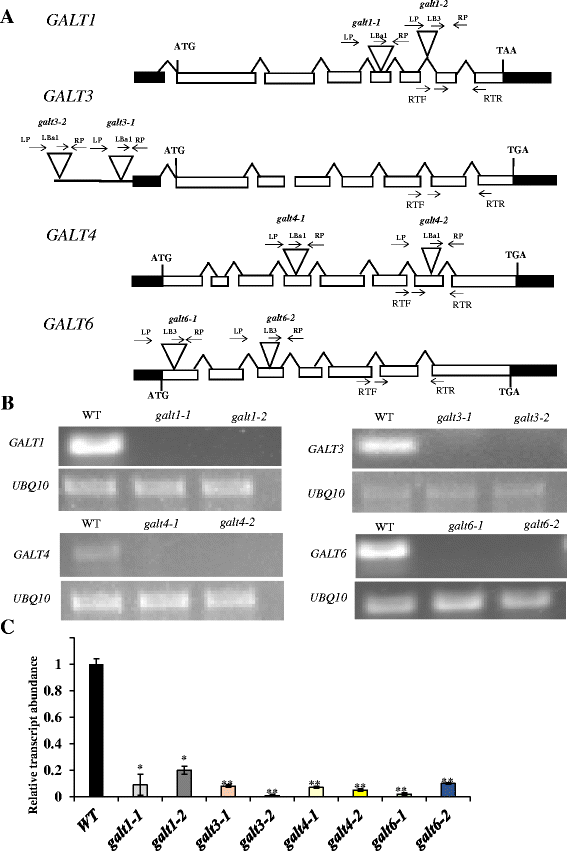
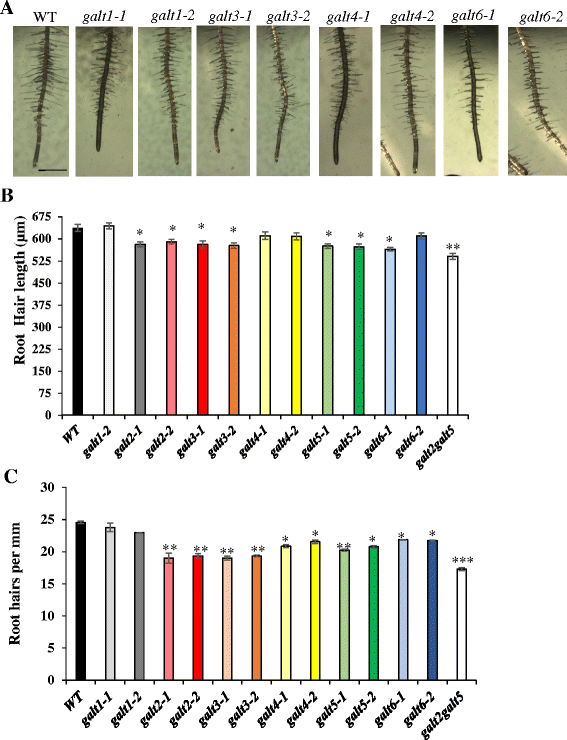
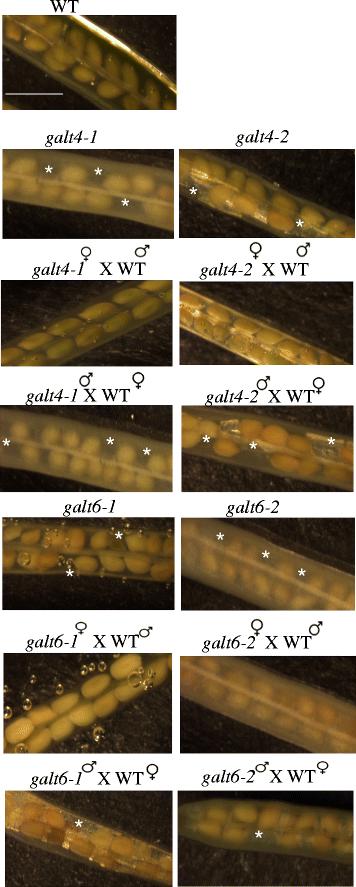
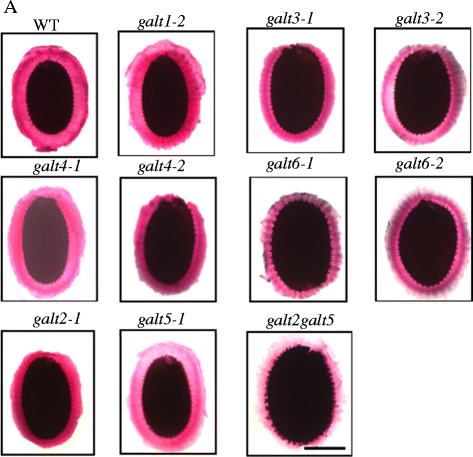
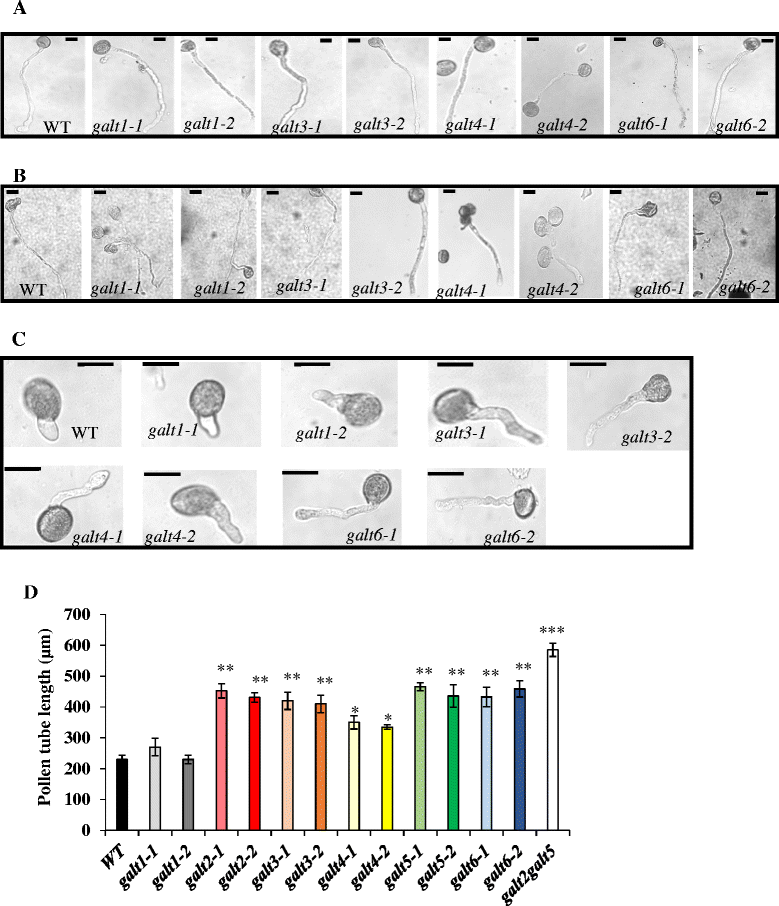
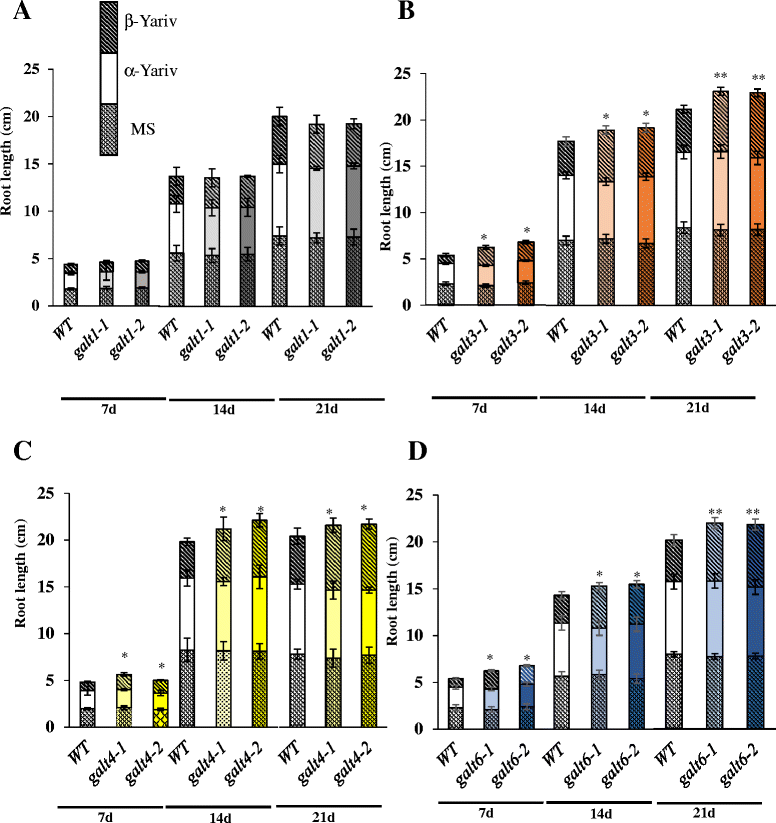

Similar articles
-
Functional characterization of hydroxyproline-O-galactosyltransferases for Arabidopsis arabinogalactan-protein synthesis.BMC Plant Biol. 2021 Dec 13;21(1):590. doi: 10.1186/s12870-021-03362-2. BMC Plant Biol. 2021. PMID: 34903166 Free PMC article.
-
CRISPR-Cas9 multiplex genome editing of the hydroxyproline-O-galactosyltransferase gene family alters arabinogalactan-protein glycosylation and function in Arabidopsis.BMC Plant Biol. 2021 Jan 6;21(1):16. doi: 10.1186/s12870-020-02791-9. BMC Plant Biol. 2021. PMID: 33407116 Free PMC article.
-
Two Hydroxyproline Galactosyltransferases, GALT5 and GALT2, Function in Arabinogalactan-Protein Glycosylation, Growth and Development in Arabidopsis.PLoS One. 2015 May 14;10(5):e0125624. doi: 10.1371/journal.pone.0125624. eCollection 2015. PLoS One. 2015. PMID: 25974423 Free PMC article.
-
Back to the future with the AGP-Ca2+ flux capacitor.Ann Bot. 2014 Oct;114(6):1069-85. doi: 10.1093/aob/mcu161. Epub 2014 Aug 19. Ann Bot. 2014. PMID: 25139429 Free PMC article. Review.
-
Arabinogalactan proteins in root and pollen-tube cells: distribution and functional aspects.Ann Bot. 2012 Jul;110(2):383-404. doi: 10.1093/aob/mcs143. Ann Bot. 2012. PMID: 22786747 Free PMC article. Review.
Cited by
-
Golgi-localized exo-β1,3-galactosidases involved in cell expansion and root growth in Arabidopsis.J Biol Chem. 2020 Jul 31;295(31):10581-10592. doi: 10.1074/jbc.RA120.013878. Epub 2020 Jun 3. J Biol Chem. 2020. PMID: 32493777 Free PMC article.
-
Calcium Binding by Arabinogalactan Polysaccharides Is Important for Normal Plant Development.Plant Cell. 2020 Oct;32(10):3346-3369. doi: 10.1105/tpc.20.00027. Epub 2020 Aug 6. Plant Cell. 2020. PMID: 32769130 Free PMC article.
-
Effect of Arabinogalactans on Induction of White-Opaque Somatic Embryos of Avocado (Persea americana Mill.) cv. Duke-7.Plants (Basel). 2023 Dec 21;13(1):37. doi: 10.3390/plants13010037. Plants (Basel). 2023. PMID: 38202345 Free PMC article.
-
Extensin and Arabinogalactan-Protein Biosynthesis: Glycosyltransferases, Research Challenges, and Biosensors.Front Plant Sci. 2016 Jun 15;7:814. doi: 10.3389/fpls.2016.00814. eCollection 2016. Front Plant Sci. 2016. PMID: 27379116 Free PMC article. Review.
-
Archetypes of inflorescence: genome-wide association networks of panicle morphometric, growth, and disease variables in a multiparent oat population.Genetics. 2023 Feb 9;223(2):iyac128. doi: 10.1093/genetics/iyac128. Genetics. 2023. PMID: 36106985 Free PMC article.
References
Publication types
MeSH terms
Substances
LinkOut - more resources
Full Text Sources
Other Literature Sources
Molecular Biology Databases
Research Materials

